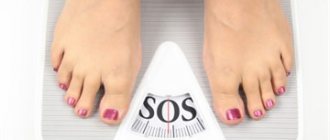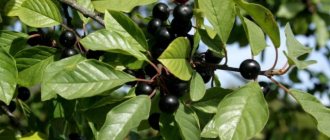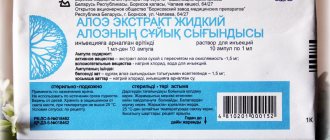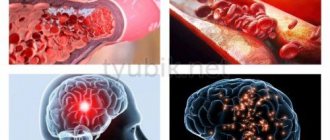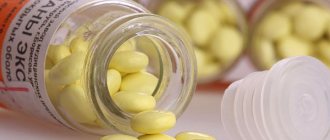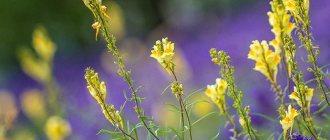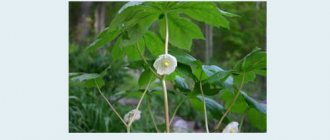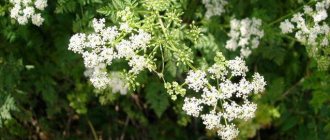Pharmacodynamics and pharmacokinetics
Pharmacodynamics
Alkaloid isolated from colchicum has analgesic and anti-inflammatory effects. Affects uric acid metabolism. Suppresses the division of granulocytes , reduces the migration of leukocytes into the inflammatory focus, inhibits the formation of leukotriene and delays the deposition of uric acid in tissues. Prevents the development of amyloidosis because it reduces the formation of amyloid fibrils .
In the first 12 hours of treatment for a gout attack, 75% of patients experience significant improvement. However, many experience adverse reactions even before clinical improvement. A daily dose of 2 mg daily reduces the likelihood of recurrent attacks. Also prevents acute attacks of familial Mediterranean fever .
Pharmacokinetics
Rapidly absorbed from the gastrointestinal tract . The maximum concentration is determined 70 minutes after administration. Penetrates well into tissues, the highest concentrations are determined in the liver, spleen, kidneys, gastrointestinal tract , and leukocytes . Metabolized in the liver, most of it is excreted in the intestines with feces and 23% in the urine. T1/2 is about 9.3 hours.
Effect on the patient's body
The effect of Colchicum on the body is directly related to the fact that it contains alkaloids of substances such as colchamine, colchicine, colchicine, etc., which have an irritating and inflammatory effect on the mucous membranes of the gastrointestinal tract.
Degenerative changes in the parenchyma are observed in the kidneys. Inflammatory processes affect the joints and bones, and the damage also extends to the periosteum and epiphyses of the bones.
Colchicine is a fairly strong capillary poison that has a paralytic effect on the capillaries, which leads to serious hemorrhages in the mucous and serous membranes.
In addition, the patient often experiences symptoms such as cold sweat, excessive salivation, and fainting.
In people who suffer from gout, colchicum can increase the secretion of uric acid. In healthy people, on the contrary, this process slows down.
Colchicum-Dispert, instructions for use (Method and dosage)
The tablets are swallowed whole with plenty of liquid.
Acute attack of gout - take 2 tablets (1 mg), then 1-3 tablets every 2 hours until the pain subsides. The daily dose is no more than 16 tablets. In order to prevent attacks, take 1-3 tablets once a day or every other day for several months (usually 3 months) in parallel with uricosuric drugs.
Treatment is carried out under hematological control. If side effects occur (usually from the gastrointestinal ), the dose is reduced or the drug is discontinued. If the level of leukocytes and platelets , treatment is stopped until the levels normalize.
special instructions
During the treatment course, constant clinical and hematological monitoring is required . If, after taking the drug, the patient experiences significant side effects, then the use of the medication should be limited or discontinued altogether.
If the number of platelets decreases to 100,000/μl or below and leukocytes to 3000/μl or below, you should stop using the drug until the blood condition is completely normalized.
Colchicum Dispert does not affect psychomotor functions , therefore, while taking it, driving or working with complex mechanisms is allowed.
Overdose
Chronic intoxication occurs after taking 10 mg or more for several days. Acute intoxication after taking 20 mg. Organs with a high proliferation rate are affected.
Intoxication is manifested by a burning sensation in the throat, the urge to vomit, nausea, thirst, the urge to urinate, tenesmus and colic, which appear 2–6 hours after taking a toxic dose.
Hemorrhagic diarrhea results in fluid and electrolyte , hypokalemia , hyponatremia and acidosis . There are complaints of tightness and pain in the heart area. Pallor, cyanosis and dyspnea , tachycardia and hypotension are noted, and collapse .
There is also a decrease in sensitivity, convulsions and paralysis. After intoxication, complete alopecia , sometimes impaired renal and liver function, and cases of blindness are observed.
Symptomatic treatment is carried out. Induce vomiting or perform gastric lavage using activated charcoal . Plasma expanders, glucose and electrolytes (mainly potassium) are administered intravenously. When myocardial contractility decreases, cardiac glycosides are prescribed. If cerebrospinal fluid pressure is elevated, a lumbar puncture . It may be necessary to perform artificial respiration. The function of the bone marrow of the liver and kidneys is monitored throughout the treatment period.
History of medical use
Colchicum, the Latin name for Colchicum (colchicum), originates from Colchis, the area where this plant moved from the Mediterranean. In the literature of Ancient Greece, there is a myth according to which Medea, the daughter of the ruler of Colchis, helped Jason get the Golden Fleece. Many endowed her with supernatural powers and considered her a sorceress who knew the secrets of poisons. The colchicum plant is very poisonous; its effect on the body can be compared to arsenic. Therefore, according to one version, the name Colchicum is associated not only with the place where the plant is especially widespread, but also with what the local princess did.
Colchicum was described by the ancient Roman physician Dioscorides, however, due to its excessively high toxicity, it was not classified as a medicinal plant. In the Middle Ages, this plant was used as a remedy against parasites. Since the 16th century, it began to be used for medicinal purposes, but only as part of complex preparations.
Doctors in Arab countries and India made a medicine from the seeds of the colchicum, which was called Kashmiri hermadayil. It competed with analogues made in Europe, such as “Laval liquid”, “Housson waters” and “Becquerel pills”.
Paracelsus advised using colchicum only for rubbing, due to the fact that poisoning occurred too often when taken internally.
Previously, almost all parts of the plant were used, but most often the seeds. Colchicum was believed to be able to prevent many terrible diseases, such as the plague. For preventive purposes, the onion was carried in the pocket.
The structural formula of colchicine was fully understood only in 1945. It turned out that its chemical structure is quite unusual and complex, since it contains a cycle that consists of seven carbon atoms. Colchicum turned out to be one of the primary sources of a new branch of organic chemistry, which studies seven-membered cycles.
In the process of studying information about colchicum, it seems that this plant has not been sufficiently studied. For many years it was believed that it had a single alkaloid, but during research, about 20 were discovered.
Only two of them are currently used for medical purposes - colchamine and colchicine.
This plant was introduced into homeopathy by German homeopaths J.K. Reil and I.E. Shtapf in the 20s of the nineteenth century.
For the preparation of a homeopathic preparation, freshly harvested spring crocus corms are used. Traditional medicine, as well as homeopathy, classify this plant as a “joint plant”.
Quite often in modern publications that are devoted to medicine, one can find references to successful treatment with both colchicine and colchamine. Recently, oncologists have been paying more and more attention to the properties of this plant.
Colchicum and its derivatives are included in state-level pharmacopoeias in many countries (it has been included in the UK Pharmacopoeia since 1618).
The plant is dangerous for many animals, especially young animals. Sheep and goats are less sensitive to the toxic substances contained in colchicum, but the milk of animals that have eaten it is poisonous and dangerous for humans. In regions of Italy where this medicinal plant is quite common, cases of goat poisoning are often reported.
In addition, colchicum is a fairly popular ornamental plant; it can be found in many gardens. The flowers themselves are very beautiful, and their advantage over others is that they bloom in the autumn months - September and October, when most of the bright flowers have already faded.
Interaction
Compatible with allopurinol and uricosuric drugs. When used with macrolides there is a risk of nephrotoxicity. The activity of this drug is reduced by cytostatics and drugs that acidify urine.
Drugs that alkalize urine have the opposite effect. When used together with Vit. B12 reduces the absorption of the drug from the gastrointestinal tract . Drugs that cause myelosuppression further increase the risk of leukopenia and thrombocytopenia .
Contraindications
The instructions for Colchicum - dispert contain information about when these tablets should not be taken. You should read this section carefully and be sure to consult a specialist:
- Hypersensitivity to the components of the drug.
- Pregnancy.
- Liver failure.
- Feeding a baby with breast milk.
- Kidney failure.
- Disturbance of cerebral hematopoiesis.
The medicine should be used with great caution to treat the elderly, those who have cachexia and disorders of the gastrointestinal tract, as well as problems with the heart and blood vessels.
Reviews of Colchicum-Dispert
Treatment of gout comes down to stopping the attack and systematic treatment of disorders of purine metabolism. For relief, NSAIDs (recently selective) and the drug Colchicum-Dispert, containing the alkaloid colchicine . The administration of colchicine is an ancient method of stopping an attack and the effect is pronounced if it is used in the first hours of an attack. The drug Colchicum-Dispert helps reverse the development of arthritis within a few hours, but it should be taken every 2 hours until the pain subsides, no more than 16 tablets per day. Due to the occurrence of adverse reactions, patients often fail to increase the dose to the optimal one - nausea, diarrhea , vomiting, and hemorrhagic gastroenteritis . Due to the toxicity of the drug, a combination of small doses of colchicine and NSAIDs . It must be remembered that the toxicity of these drugs increases in people with kidney disease. Reviews most often concern the use of the drug for gout . Everyone notes the rapid relief of pain symptoms.
- “... The drug is not cheap, but it really helps. I have tried a lot over the years of illness, but this is the only drug that saves me.”
- “... It’s very effective, but you have to buy the original German one (my relatives brought it to me). There are a lot of fakes that don’t help.”
- “... I used it and was always effective during an attack. It really helps, but you can’t always find it in the pharmacy.”
- “...Quickly relieves pain and eliminates joint swelling.”
- “... I used it for the first day and it became a little easier.”
- “... It didn’t cause any side effects for me.”
- “... Quickly relieves an acute attack, but pain immediately appears in the kidney area.”
Price
The drug is available only with a doctor's prescription
The product can be purchased at almost any pharmacy chain. It is also possible to order the product from an online pharmacy.
- The average price of 1 package of Colchicum Dispert in Russia is 700-1500 rubles (depending on the packaging option of the product - 20 tablets or 50 tablets);
- The average price of 1 package of Colchicum Dispert in Ukraine varies between 300 and 600 UAH (the price also depends on the packaging option of the product - 20 tablets or 50 tablets).
Indications for use
- Gout - pain in the joints seems to be tearing, they are aggravated by touch and movement, and in cold damp weather. Despite the absence of swelling, the joints are inflamed and hyperemic. The toes are most susceptible to this condition. Often, exacerbation of gout symptoms is accompanied by weakness of the patient;
- Gastritis, which is accompanied by burning pain in the abdomen, complete aversion to the taste, sight and smell of food. The patient suffers from severe flatulence, nausea and vomiting with mucus;
- Enterocolitis - the patient suffers from stabbing pain along the colon, increased gas formation. The stool is mucous, bloody, some note that it becomes jelly-like. Fainting may occur during defecation;
- Motion sickness while moving in transport, which is accompanied by severe weakness, fainting, nausea, vomiting;
- Paraplegia, accompanied by severe weakness, as well as trembling and numbness of the hands, a feeling as if goosebumps were crawling throughout the body;
- Acute heart failure, which is accompanied by acute pain in the heart, as well as an arrhythmic pulse, swelling of the legs, stupor;
- Patients suffering from nephrosis, nephritis, cystitis with very painful urination.

